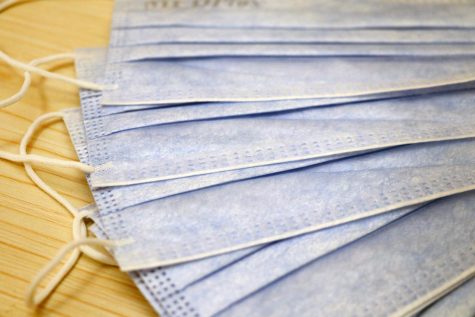Ironing Out the Dress Code
Students in varying levels of the dress code.
The dress code at Groton has always been a controversial topic. Many feel that there is an unfair disparity between what girls are allowed to wear and what boys are allowed to wear. But there is a reason behind that difference. Boys’ clothing is usually not form-fitting, and have far simpler styles than girls’ clothing. It’s very easy to tell whether or not a boy is adhering to the code: either he is wearing a collared shirt and a pair of nice pants, or he’s not. It’s easy for teachers of either gender to approach a boy about changing because of both the clear-cut nature of the boys’ dress code, and the fact that the boys would very rarely be asked to change because their clothing was deemed “distracting.”
It’s very different for girls at Groton. While it is nice that girls have more freedom with what they are able to wear, it is not nice that faculty members (and occasionally other students) feel that they have the right to offer their full opinion on a girl’s clothing choices. I believe that there is a certain time and place for everything, and fashion is no exception. I agree with the Guide to Groton when it says that “athletic attire, skirts and dresses of an inappropriate length, and sweatpants” are unacceptable things to wear to classes.
But I also believe that you should always treat others with respect and dignity, and sometimes faculty members do not do that when they address girls about what they are wearing. Girls shouldn’t make others feel uncomfortable with their choice of clothing, but neither should teachers make girls feel uncomfortable when they ask them to change. A faculty member should never or tell them that they are “distracting boys.” It angers me that this is even a reason for asking a girl to change. Boys should be able to control themselves if they see a girls’ shoulder blade or thighs.
When asking a girl to change, teachers should simply (politely) request that she return to her room and change. Trust me: she is already uncomfortable enough that a teacher had to address her choice of clothing. If the girl disputes the request, I think that faculty members should use their discretion to explain why they believe that the she should change. At Groton, teachers and students have very close relationships—we both live here, and spend most of our time together.
But teachers are not our parents, and do not have the right to comment on certain aspects of our lives, more specifically, on girls’ clothing decisions. When asking a female student to change, faculty members should comment only on what she is wearing.
I have heard from many faculty members that they themselves do not understand the girls’ dress code. Guess what? The girls don’t understand it very well either! That’s because the rules are highly unclear. Girls have so many clothing options that it would take hundreds of hours to write a comprehensive outline of what is and isn’t acceptable for them to wear. As I understand it, the girls’ dress code is essentially defined by personal discretion, with a few exceptions like sweats and athletic clothes.
But the difference between the genders extends beyond clothing variety. Girls have varying body types. A flat-chested girl might wear one shirt, and a larger-chested girl may wear the same shirt, but chances are that the two look different. Of course, the deans cannot enforce rules only on girls of a particular body type. It would be ridiculous to put such a distinction in writing. The rules only state that students should use their own discretion—but that varies from student to student.
Likewise, the discretion of faculty members varies drastically. While this is an unfortunate dilemma, I believe that dressing for school and other more professional settings is something that we, high school students who will soon enter the real world, need to experience. As unpleasant as it can be, we need to be prepared for real life, where we will inevitably be judged by others, fairly or not. As Mr. Das said, “This is an ever increasingly global world in which you have to learn to adapt to environments of different cultures . . . A dress code at school allows you to acquire a comfort level with different dress requirements for different occasions.”
The debate over dress code will continue forever. As long as Groton exists, there will be anger over the dress code from both students and faculty. As long as everybody is working towards the same goal—which is for everyone to feel comfortable and secure in the place where they should be, above all else, learning—we are moving in the right direction.










